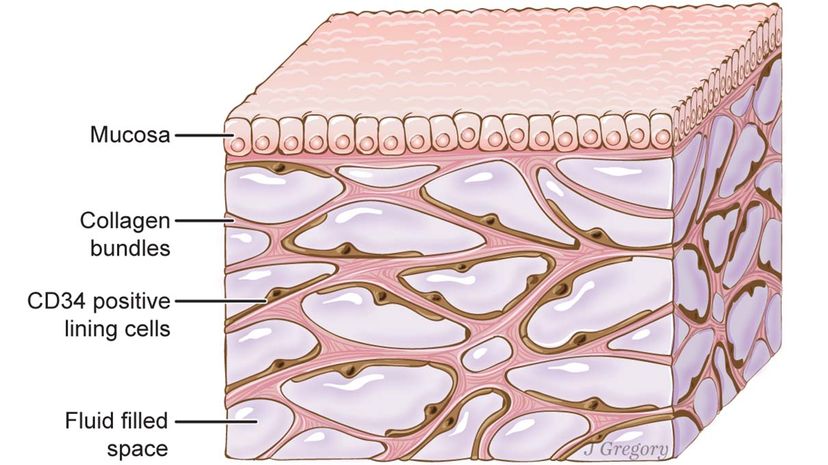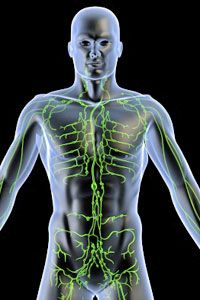
A discovery announced at the end of March 2018 may be seriously changing our understanding of human anatomy.
Researchers, including two doctors at Beth Israel Medical Center in New York, announced in an article published in Scientific Reports on March 27, 2018, that they had found a mesh-like network of tissue with cavities that allow fluid to move through the body on a previously unknown "highway." This web of tissue is found underneath the skin, surrounding blood vessels and lining the lungs, digestive organs and urinary system.
Advertisement
Previously thought to be simply dense connective tissue, the structure has now been identified as a fluid-filled web of collagen (a main protein found in skin and other connective tissue) and elastin connective tissue, and is being called a new organ by some of the researchers involved.
"It's almost a highway for cells to move through tissue," says Rebecca G. Wells, a professor of medicine at the University of Pennsylvania and one of 11 authors of the report. This "highway" connects to the lymphatic system and could be a way cancer cells spread. "We have never understood the mechanism of how that happens," senior author of the report, Neil Thiese, told The New York Times.
If researchers gain a better understanding of the spread of cancer, they might be able to interrupt it, said Thiese, a liver pathologist at New York University School of Medicine.
A New York University press release said the discovery could add to our understanding of all organs and most major diseases.
Advertisement


